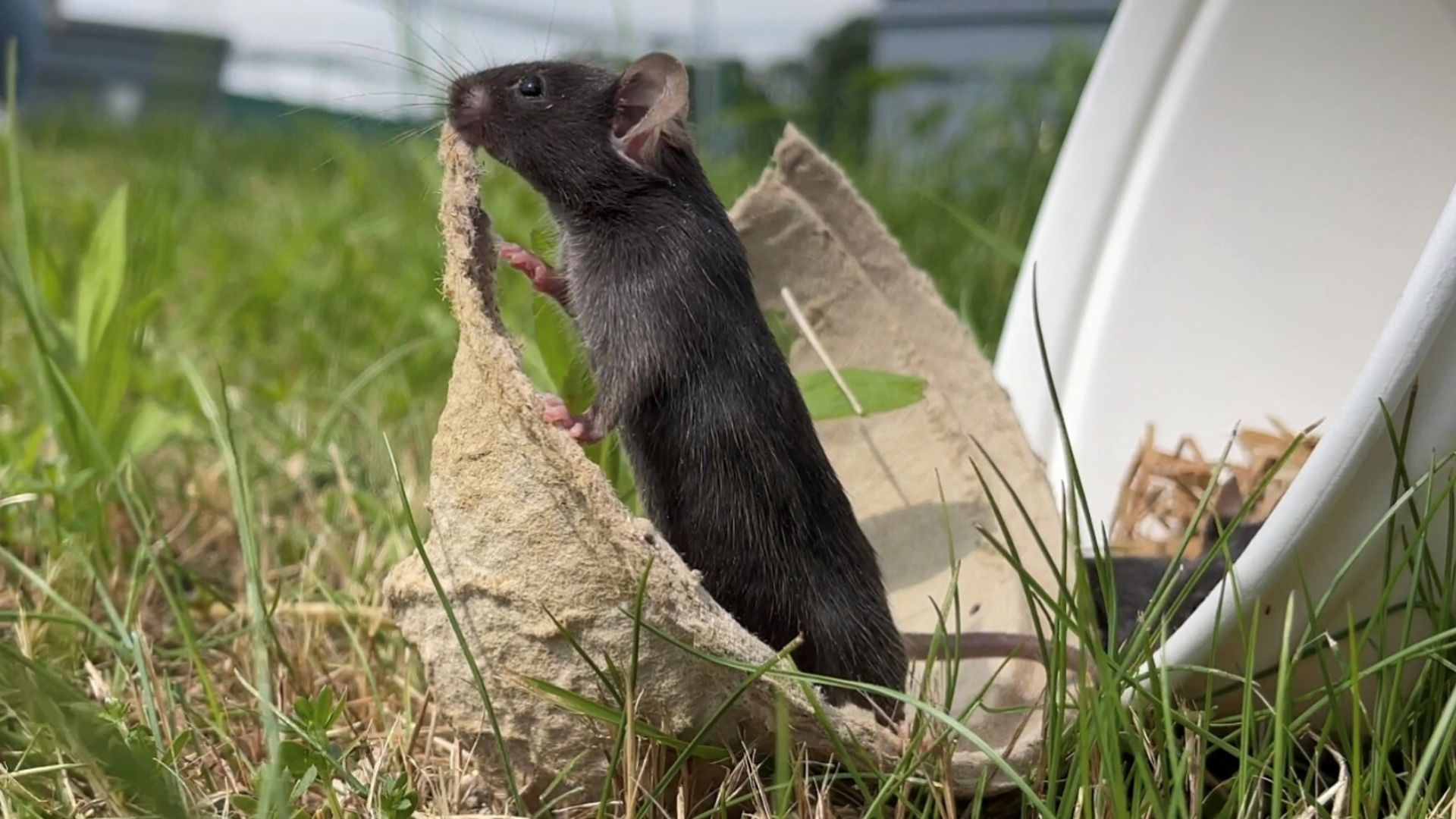Spacecraft Gears Up for Mercury Flyby
A NASA spacecraft has a date with Mercury next week for a flyby that will return the first detailed views of the small planet in more than 30 years.
The MESSENGER probe will skim just 124 miles (200 km) above Mercury?s uncharted hemisphere during its closest pass at 2:04 p.m. EST (1904 GMT) on Monday, marking the first of ultimately three flybys to bleed off speed and enter orbit around the planet.
?Our spacecraft is lined up and ready to go,? said Marilyn Lindstrom, NASA?s MESSENGER program scientist, in a Thursday briefing, adding that the probe has already returned its first images of its target. ?Mercury, here comes MESSENGER.?
Launched in August 2004, MESSENGER — short for the bulky moniker MErcury Surface, Space ENvironment, GEochemistry, and Ranging — is the first spacecraft to visit Mercury since NASA?s Mariner 10 probe swung past the planet three times between 1974 and 1975. But unlike its predecessor, MESSENGER will rendezvous with Mercury four times, making three flybys before ultimately entering orbit in 2011 for a one-year science campaign.
The $446 million mission is aimed at probing the secrets of Mercury, ranging from its wispy thin atmosphere to an unusually dense interior. The mission will also generate the first maps of some 55 percent of the planet?s rocky surface that Mariner 10 missed during its three planetary passes.
?More than half the planet?s never been seen before,? said MESSENGER principal investigator Sean Solomon, of the Carnegie Institution of Washington. ?That will change on Monday.?
MESSENGER?s Mercury flyby actually begins in earnest around midday Sunday, when the probe will turn itself away from Earth to bring its science instruments to bear on its planetary target. The spacecraft will snap more than 1,200 photographs of Mercury during its first rendezvous while a protective sunshade keeps its cameras and other instruments at room temperature. The sun-facing side of the shade may reach temperatures of 600 degrees Fahrenheit (315 degrees Celsius) or so, researchers said.
Get the world’s most fascinating discoveries delivered straight to your inbox.
For 14 minutes, the probe?s power-generating solar panels will be in Mercury?s shadow, forcing the spacecraft to briefly rely solely on its batteries, said Eric Finnegan, MESSENGER systems engineer. The probe will use the gravitational pull of Mercury to slow its speed by about 5,000 miles per hour (8,046 kph) during the flyby, he added.
MESSENGER is expected to reestablish contact with Earth about midday on Tuesday, 22 hours after the closest Mercury approach, and then beam back images to its eager science team. The probe has already flown past Earth once and Venus twice as it spiraled down the solar system on the 4.9 billion-mile (7.9 billion-kilometer) trek to Mercury.
?Now, we?re just a few days away from our first glimpse of Mercury in 33 years,? said Solomon. ?It is an understatement to say that the science team is extremely excited.?

Tariq is the editor-in-chief of Live Science's sister site Space.com. He joined the team in 2001 as a staff writer, and later editor, focusing on human spaceflight, exploration and space science. Before joining Space.com, Tariq was a staff reporter for The Los Angeles Times, covering education and city beats in La Habra, Fullerton and Huntington Beach. He is also an Eagle Scout (yes, he has the Space Exploration merit badge) and went to Space Camp four times. He has journalism degrees from the University of Southern California and New York University.
 Live Science Plus
Live Science Plus





